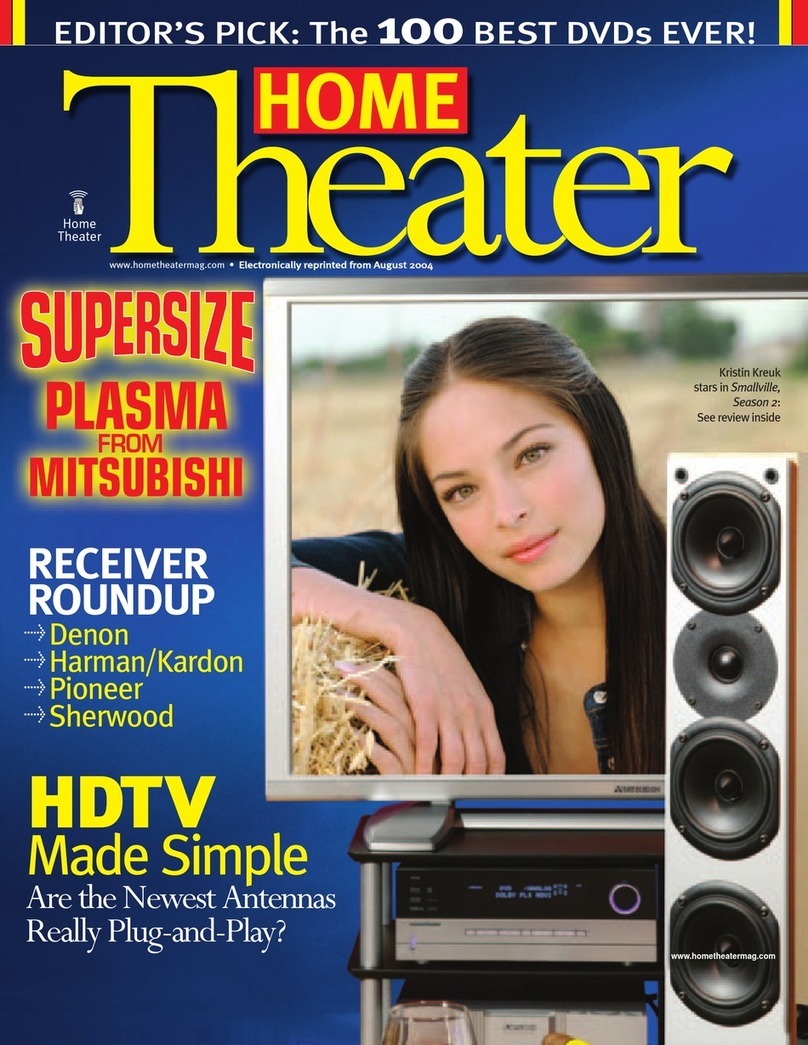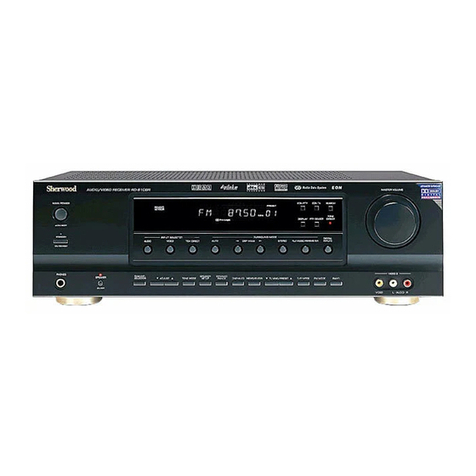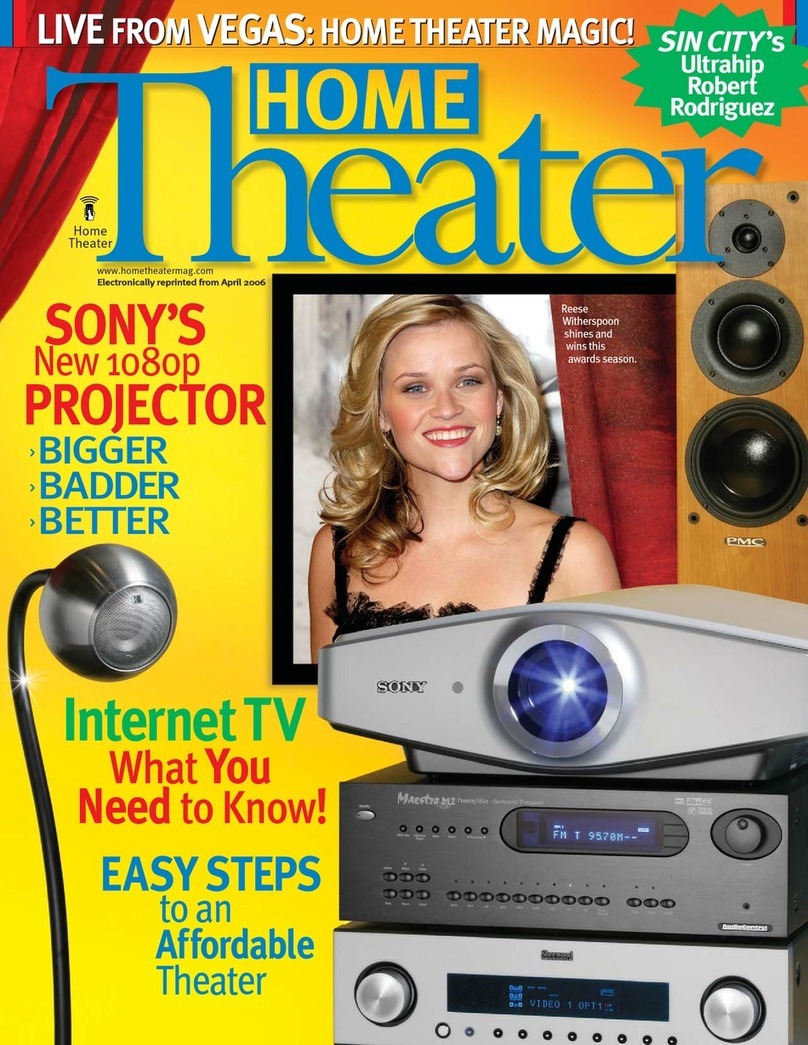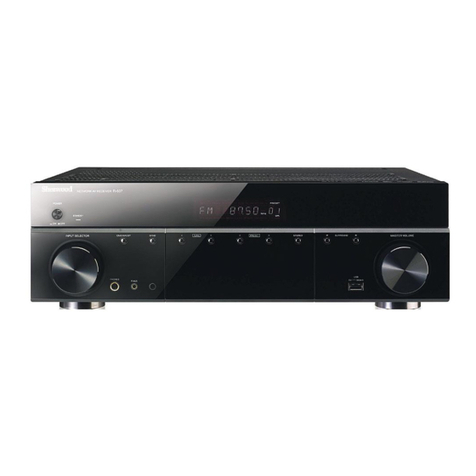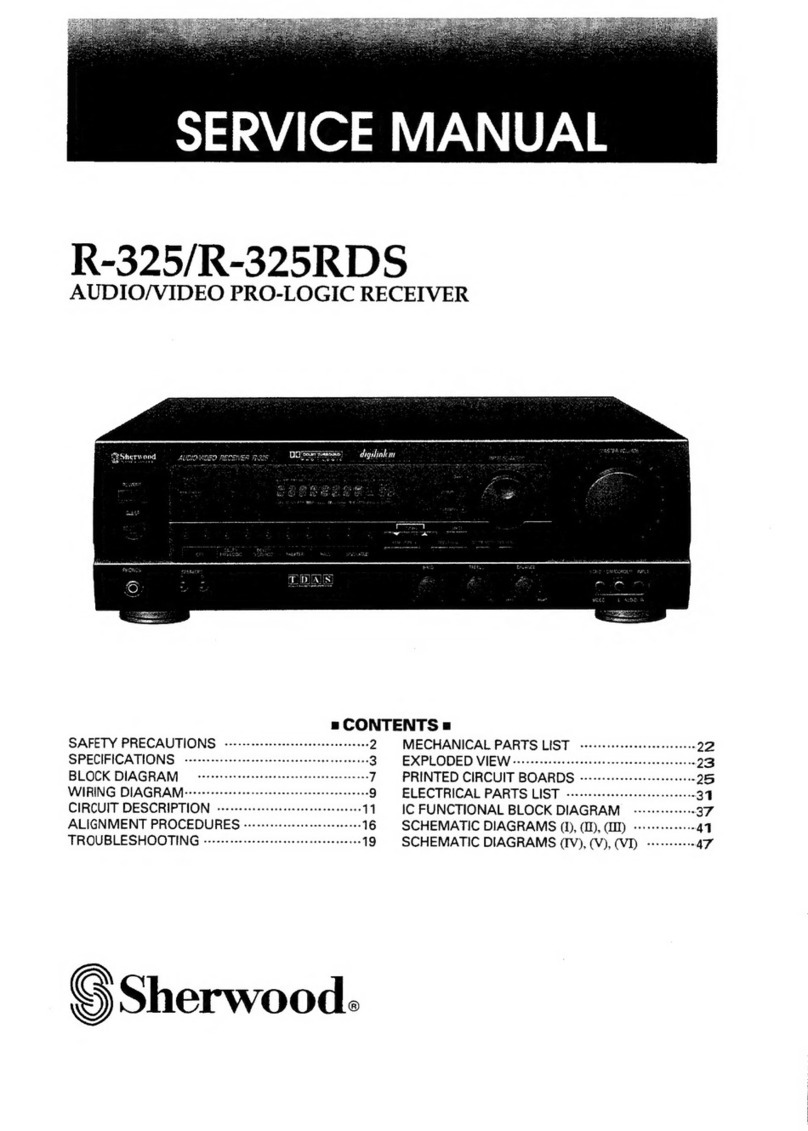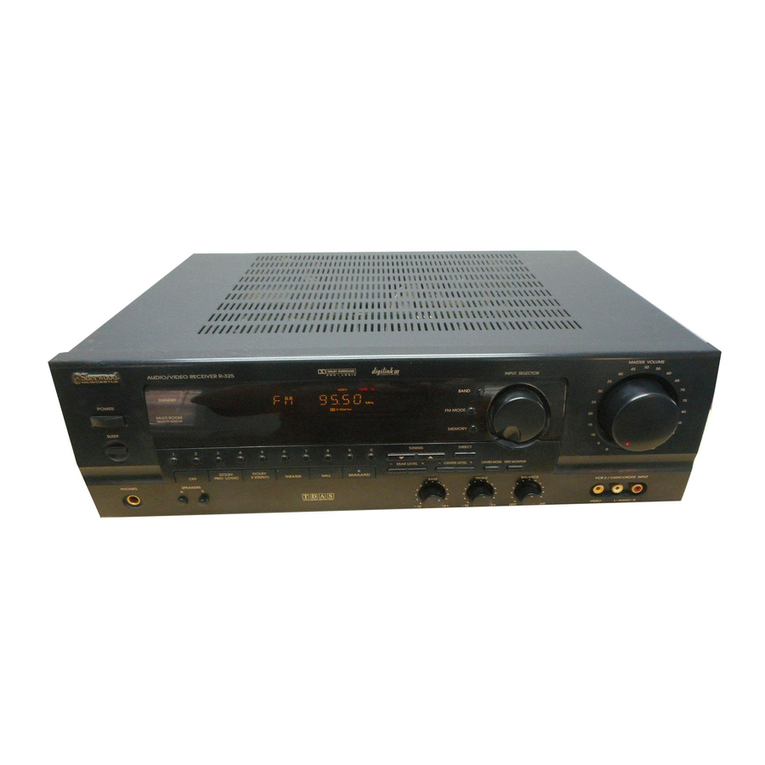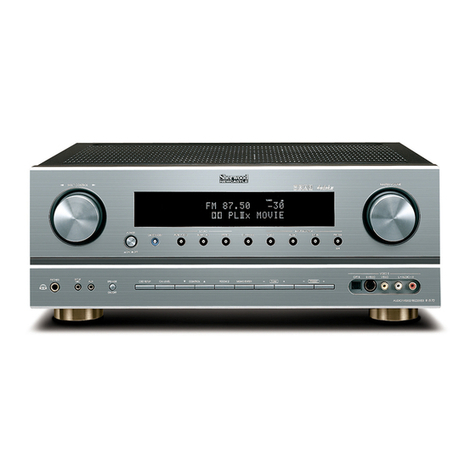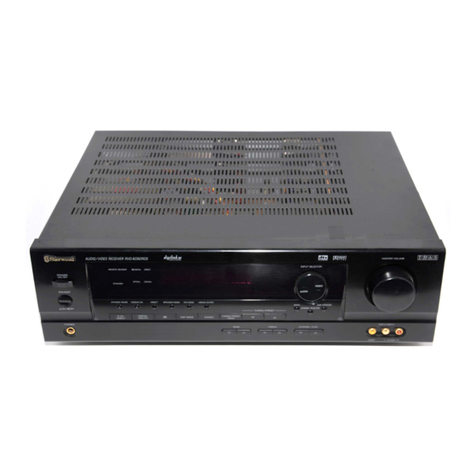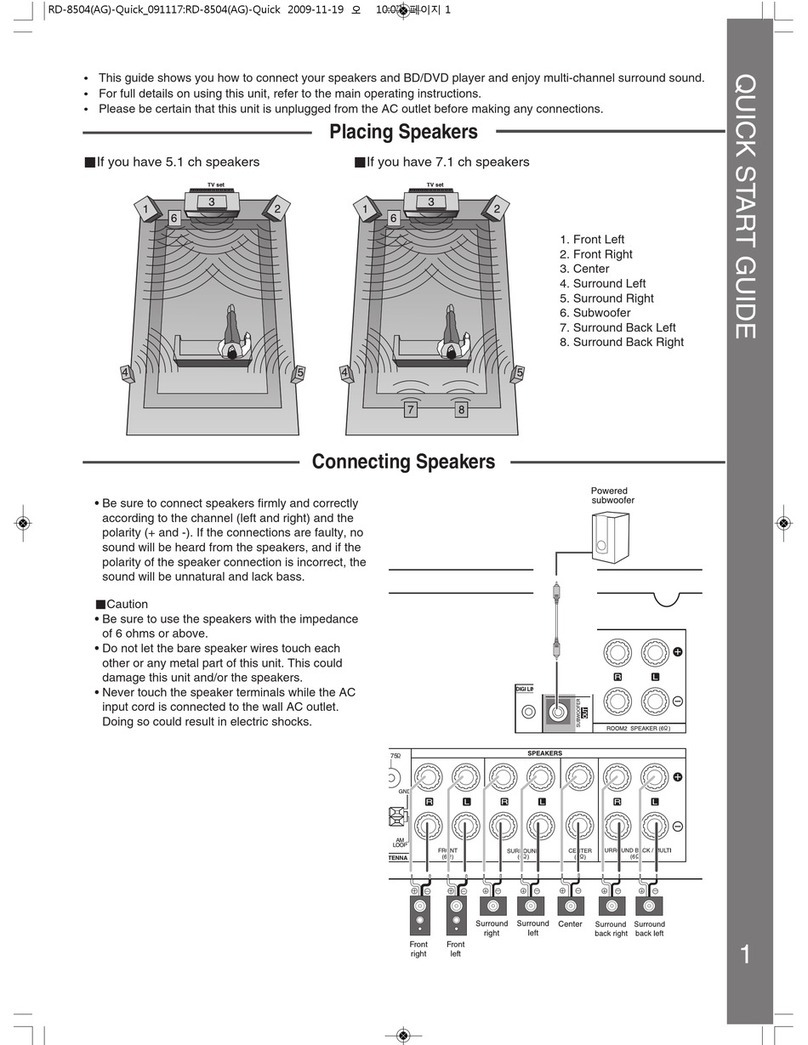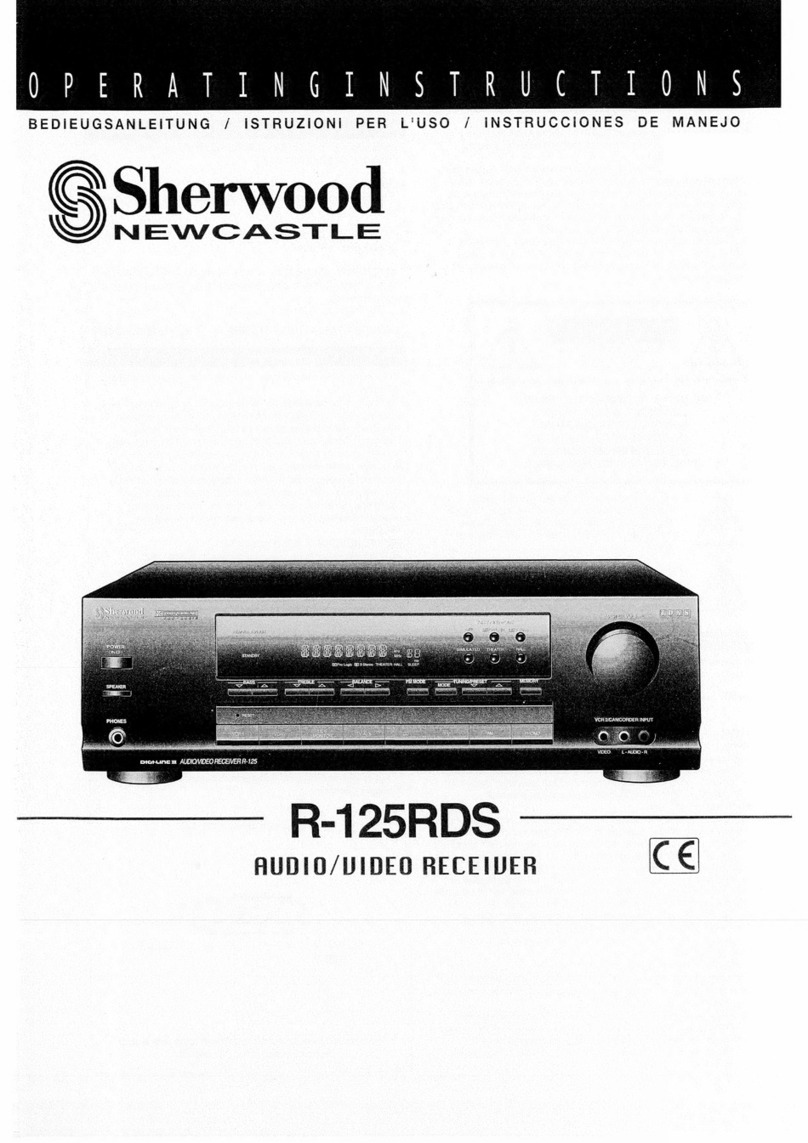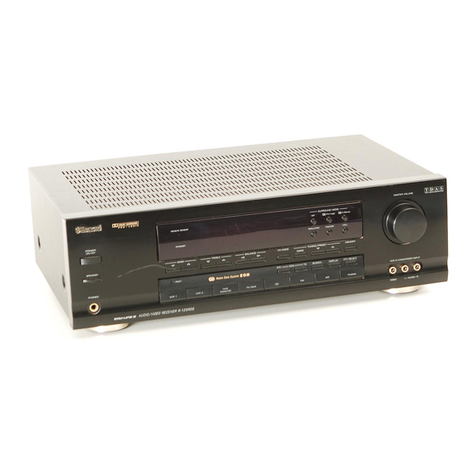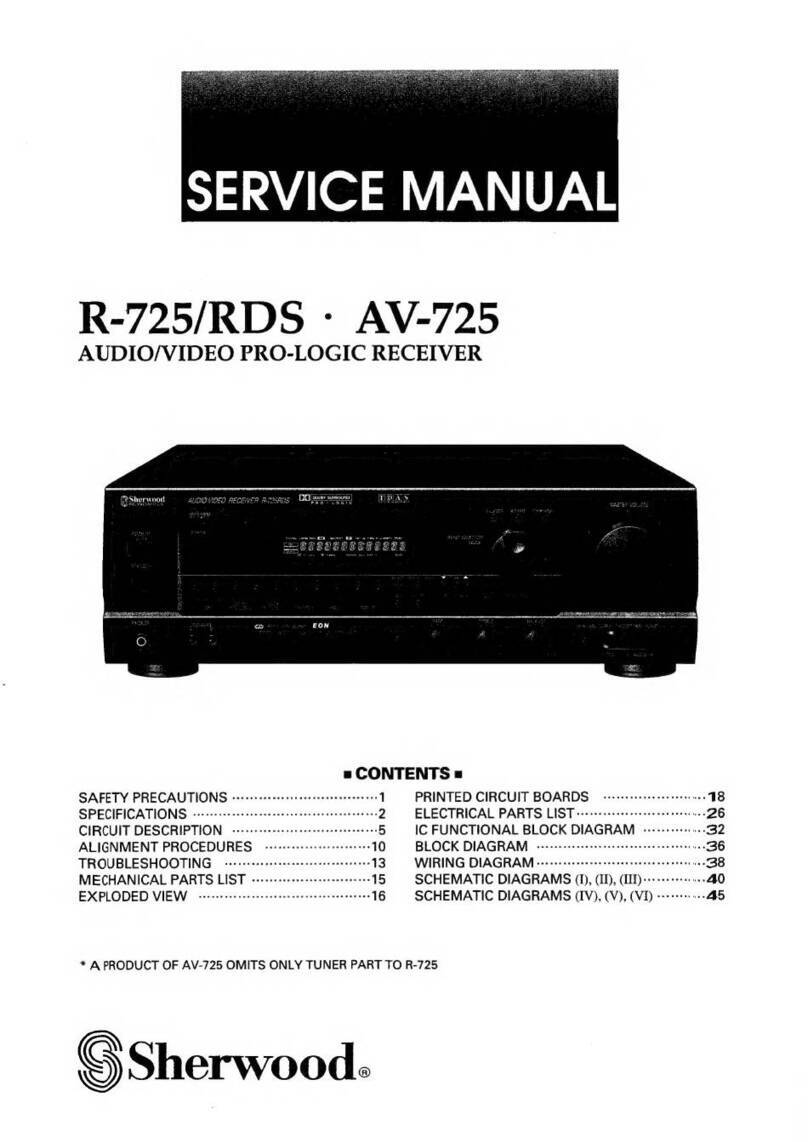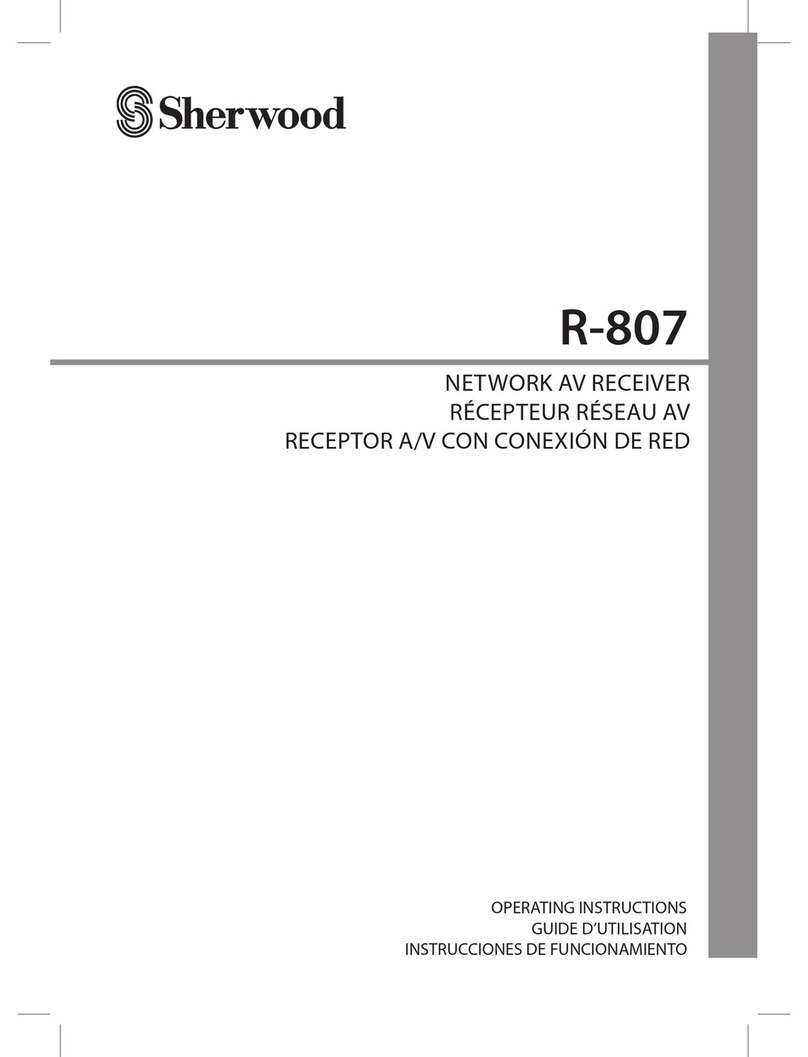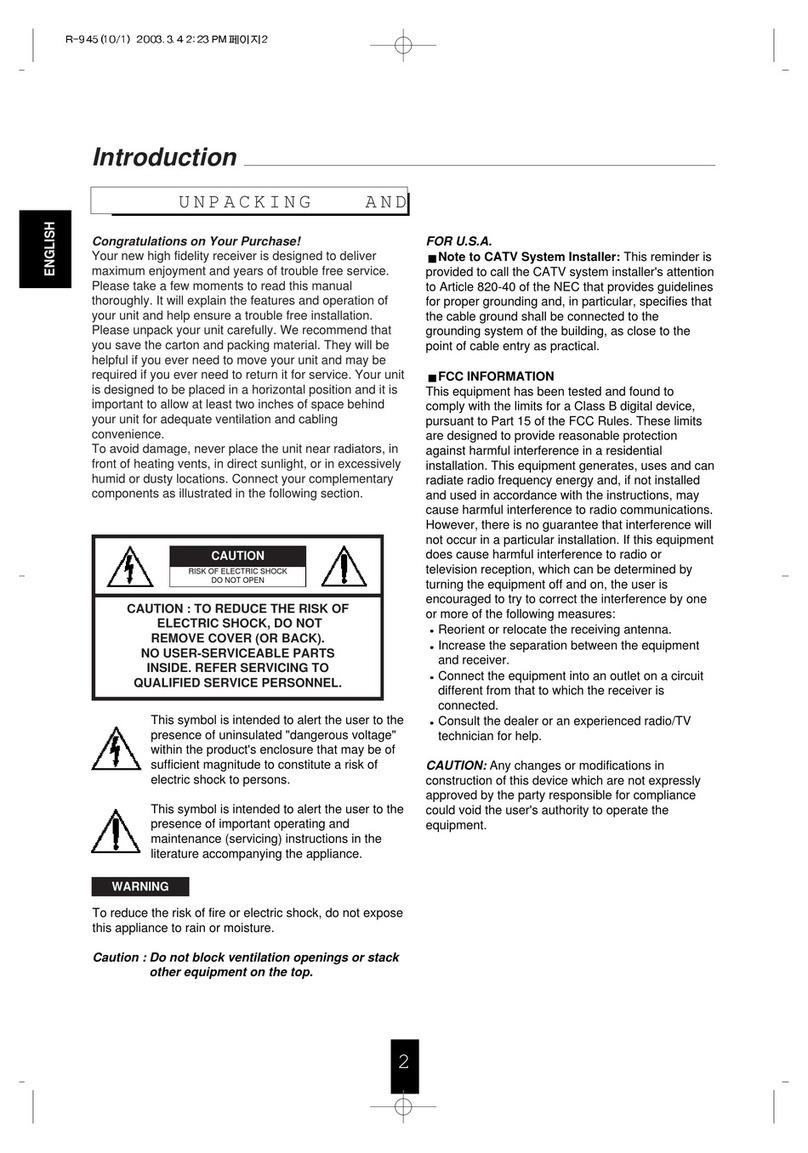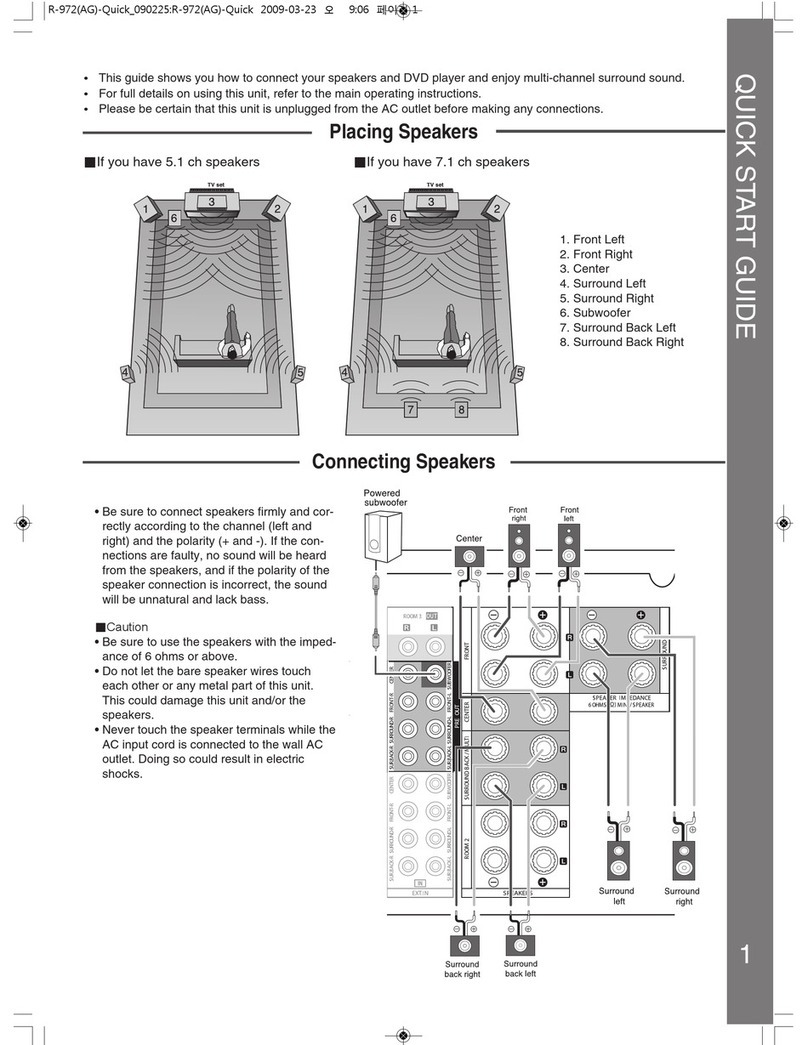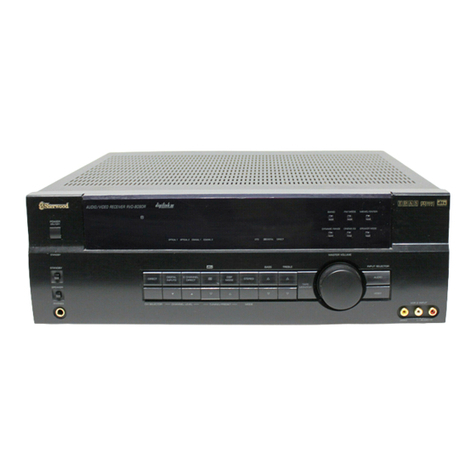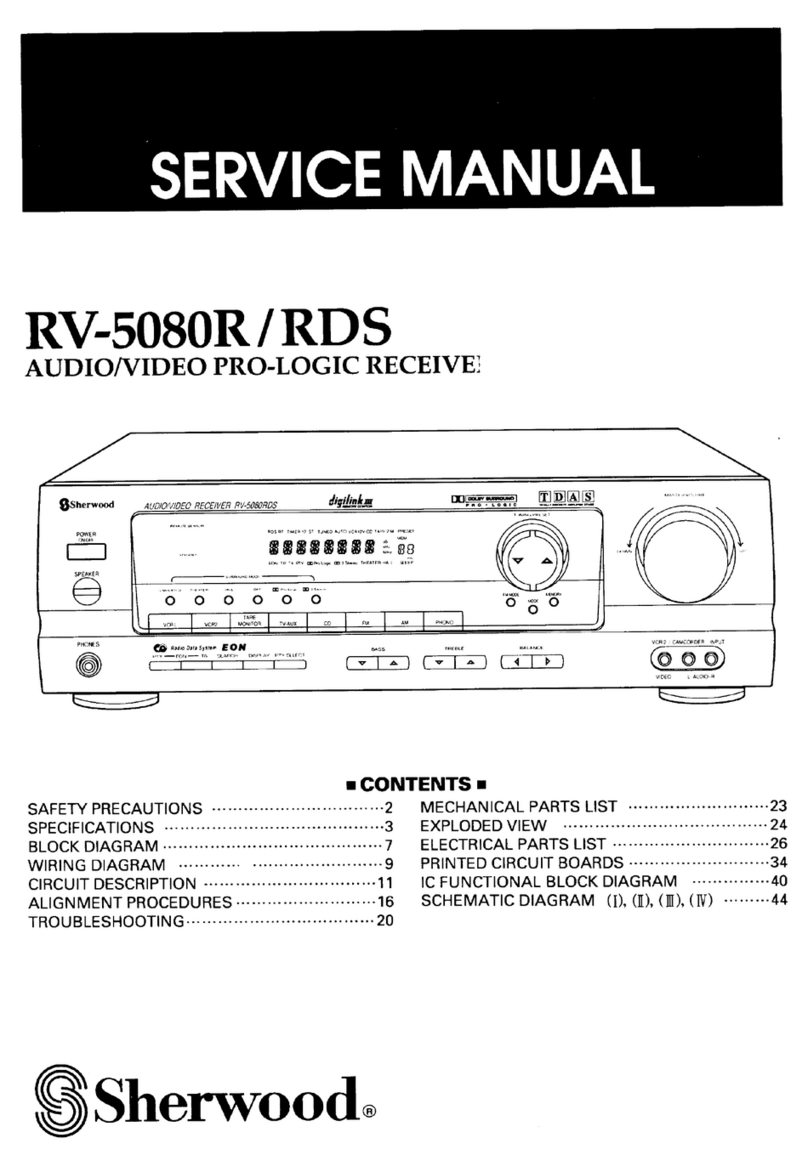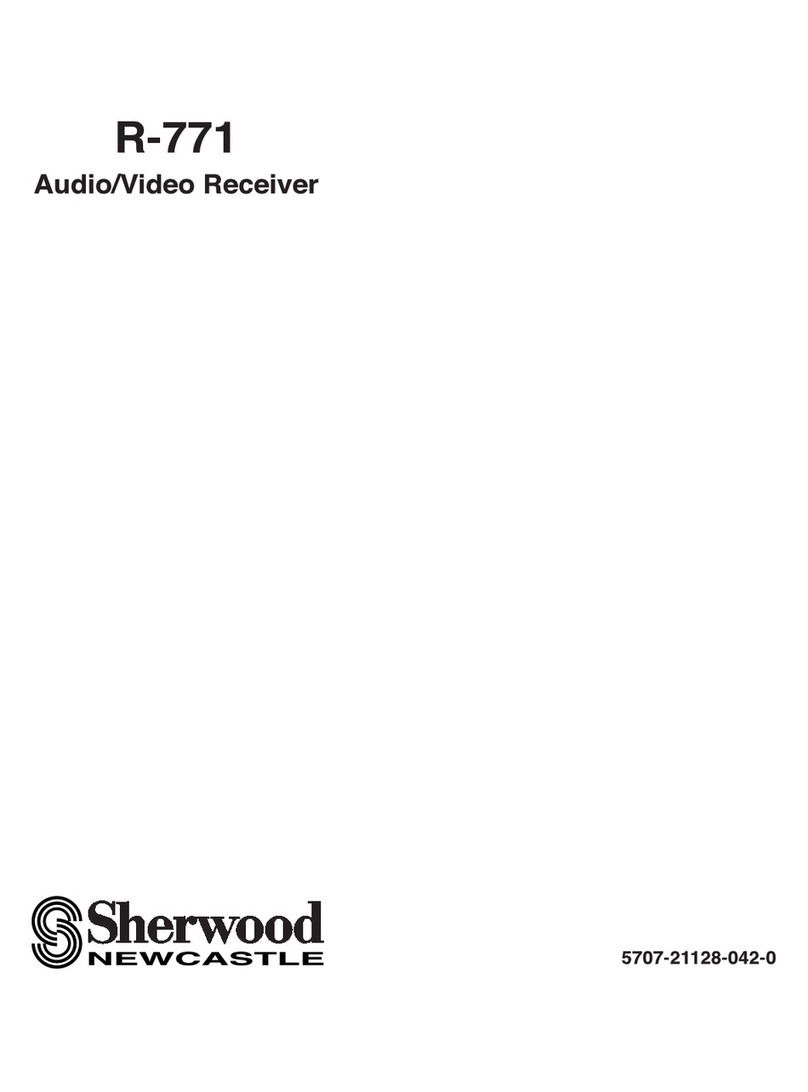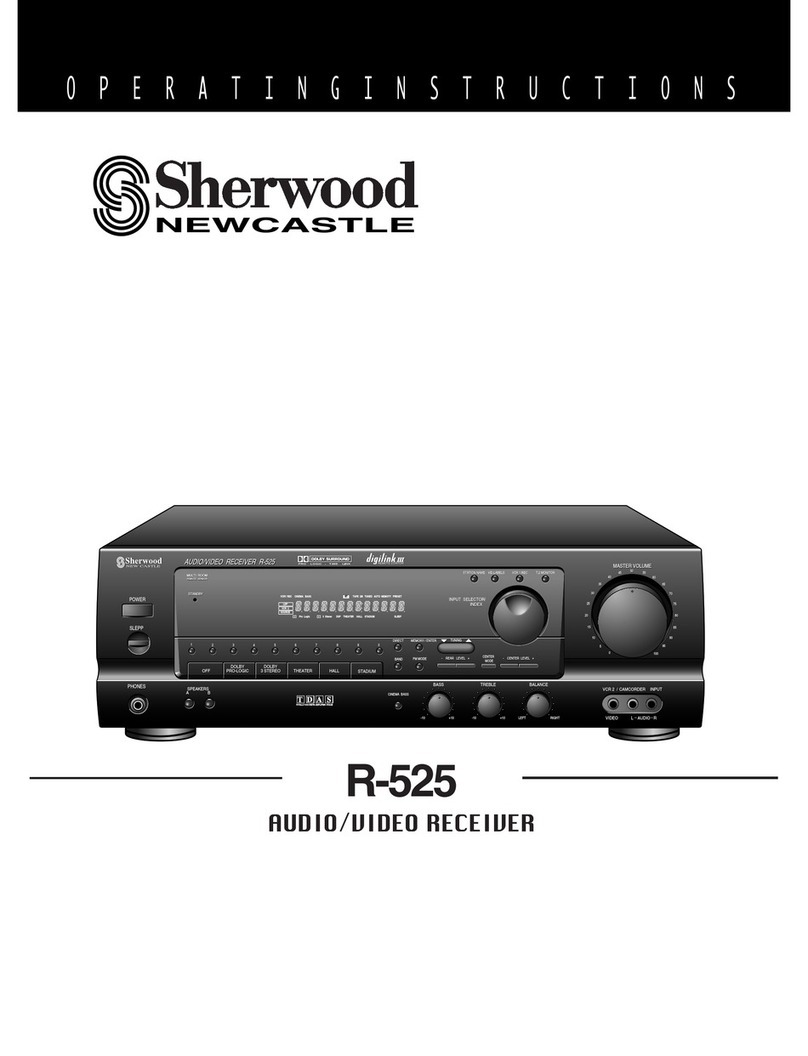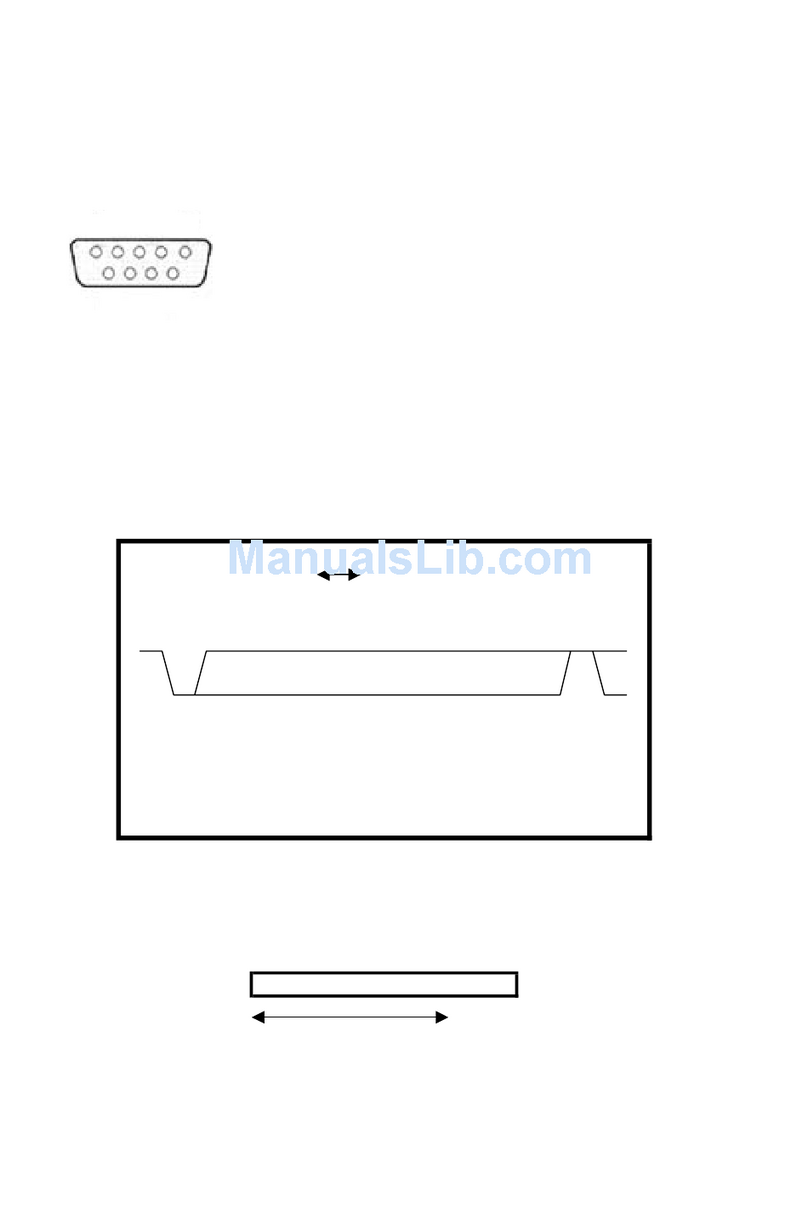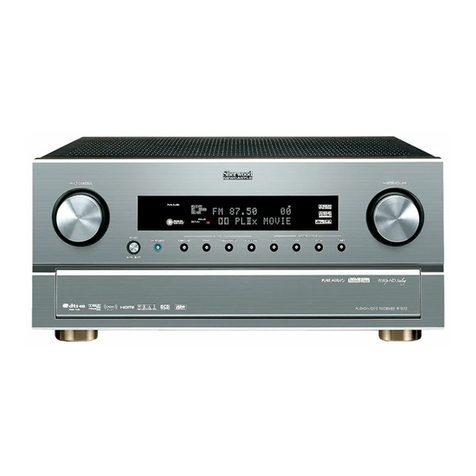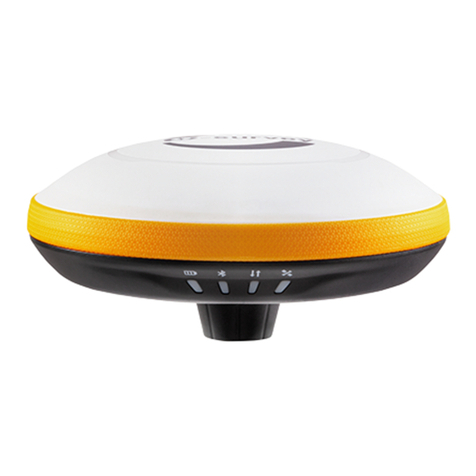DVD, the Sherwood struck just the right bal-
ance of power and finesse. Because I use full-
range front speakers in a fairly small room, I
don’t feel the need for a subwoofer in my sys-
tem. Although my big B&W 801 speakers
present a fairly benign 8Ωload to the amp,
they’re more than happy to soak up as many
watts as I care to throw at them. They also
require an amp with good damping character-
istics to control their big 12-inch woofers.
This obviously places greater demands on a
power amplifier than would a more typical
home theater speaker system with small satel-
lites and a powered sub.
Judging by the deep roar of the Saturn V
rocket in Apollo 13, the manifold explosions
and mayhem of Saving Private Ryan, and the
submarine and minefield detonations in
Finding Nemo, among others, the R-965 had
what it took to handle the most demanding
sound effects, even when driving full-range
speakers. It also effortlessly reproduced sub-
tler ambient effects and delivered clean, intel-
ligible dialog. I have yet to feel the need to
engage the Sherwood’s Cinema EQ, though
I’m glad to know it’s there.
I watch a lot of regular TV programming
on my system. Although some shows are
recorded in matrixed Dolby Surround, many
are still broadcast in stereo or even mono.
Nevertheless, I still prefer to have the dialog
coming out of the center speaker, so I usually
leave the processor in its Dolby Pro Logic
mode when watching TV. The Sherwood’s
Dolby Pro Logic IIx Movie mode worked great
for this purpose, providing a noticeable
improvement over plain ol’ Pro Logic.
Last but not least, I have to admit that
both the DTS Neo:6 Music and Dolby Pro
Logic IIx Music modes work pretty darn well
with many 2-channel music sources. These
are certainly a huge improvement over the
grotesque DSP modes still found on all too
many products. (The R-965 has a dozen such
DSP modes, but I won’t tell if you won’t.)
Conclusion
The Sherwood Newcastle R-965 is an attrac-
tive and well-thought-out piece with excep-
tional build quality. It features an enormously
comprehensive and flexible suite of AV inputs
and outputs, including my new “must have”
feature, unified component-video output.
Above all, it delivered excellent audio per-
formance in 2-channel and multichannel
modes. The one area that could stand some
improvement is the user interface—but the
same thing can be said of most of its compe-
tition.
Speaking of competition, the R-965 must
duke it out for shelf space in a brutally com-
petitive and rapidly changing market. Several
7.1-channel receivers with similar specifica-
tions and features are on the market, and all
cost less than the Sherwood. Examples
include the Denon AVR-3805 ($1199),
Onkyo TX-NR901 ($1500), and Marantz
SR7400 ($999).
I haven’t had any hands-on experience
with these specific receivers, so I can’t say
how they sound compared to the Sherwood.
But the R-965 sets the bar pretty darn high.
And I’d be surprised indeed if any less-expen-
sive competitor even comes close to the
Sherwood’s superior build quality and elegant
look and feel. If you own a high-performance
luxury car like a BMW or Lexus (or would if
you could), the R-965 has your name written
all over it.
[SHERWOOD NEWCASTLE R-965]
All measurements were taken on the left
channel, except as noted. The Sherwood New-
castle R-965’s 2-channel analog frequency
response, in Pure Audio mode, from the CD input
to the speaker output, was –0.57dB at 10Hz,
–0.18dB at 20Hz, –0.07dB at 20kHz, and –0.44dB
at 50kHz. The response from the multichannel
input to the speaker output differed from these
results by less 0.2dB at 10Hz and 0.07dB,
maximum, at 20Hz, 20kHz, and 50kHz.
The Dolby Digital response (optical input to
speaker output) was –0.38dB at 20Hz and
–0.77dB at 20kHz, left channel (–0.34dB at 20Hz
and –0.76dB at 20kHz, center channel). With the
Sherwood’s surround left channel set to Small
and the crossover frequency set to 80Hz, the
response in that channel was –6dB at 82Hz at
the bottom end and –0.79dB at 20kHz at the top.
The line output from the LFE channel, normalized
to the response at 40Hz, was –1.46dB at 20Hz and
–6dB at 109Hz.
The signal/noise ratio (A-weighted, 2.83V @
8Ω) measured –99.8dB. The gain measured
28.9dB, CD in to speaker out, with the level
control set to +5. The THD+noise in 2-channel
operation at 2.83V into 8Ω measured 0.010% at
20Hz, 0.011% at 1kHz, and 0.009% at 20kHz. At
2.83V into 4Ω, the corresponding results were
identical to within 0.001%.
Driving all seven channels into 8Ω, the Sher-
wood delivered (to the nearest watt) 108Wpc at
20Hz (126Wpc into 4Ω) and 113Wpc at 1kHz
(144Wpc into 4Ω) before clipping (1% THD+noise).
At 1kHz, with only two channels operating, the
Sherwood clipped at 134Wpc into 8Ω and 220Wpc
into 4Ω.—Thomas J. Norton
MEASUREMENTS
Sherwood Newcastle R-965
Editor:
Thank you for Lawrence E. Ullman’s thought-
ful review of our Newcastle R-965 AV
receiver. His recognition of its “beautifully
packaged” chassis, “silky” motions, “excep-
tional build quality,” and “excellent audio per-
formance” was appreciated by all involved.
We do regret that a standard industry “boil-
erplate” warning regarding the use of low-
impedance speakers and our perceived
specsmanship seemed to color the first part of
the review with skepticism. As your measure-
ments and LEU’s listening tests confirm, the
R-965 is no wimp. With all seven channels
driven, its actual power output exceeds
100Wpc RMS into 8Ωand 125Wpc into 4Ω.
It is clearly low-impedance–capable.
Also important is the R-965’s field
upgradeability. Since its introduction earlier
this year, we have already released two
updates. The first added AV Synch delay for
users of advanced TVs, and the second incor-
porates automatic speaker setup. We are
scheduled to add parametric EQ before the
end of the year. These updates are available to
Newcastle owners at no charge and are an
important part of our customer service.
Thank you again for your appreciation of
our “great-sounding receiver.”
Jeffrey Hipps
Sr. VP, Marketing and Product Planning
Sherwood America
Manufacturers’Comments
Posted with permission from the December 2004 issue of Stereophile Ultimate AV ® www.UltimateAVmag.com. Copyright 2004, Primedia Inc. All rights reserved.
For more information about reprints from Stereophile Ultimate AV, contact Wright’s Reprints at 877-652-5295
